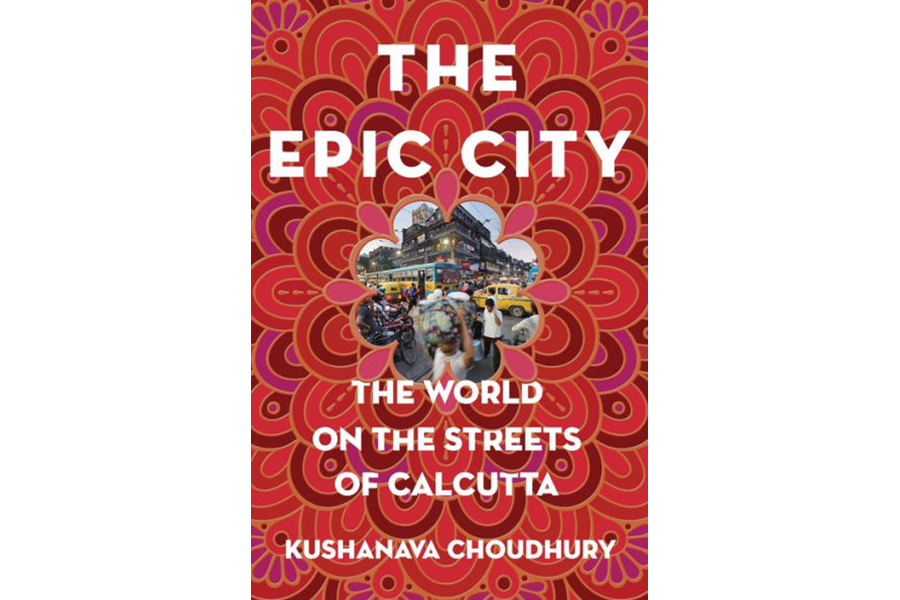'Epic City' tells the story of a young expat and his love affair with Calcutta
Loading...
No one in his or her right mind is about to deny that Calcutta is an epic city. Its huge and wondrous presence, its chromatic aura spell e-p-i-c, even if you don’t know its storied past, which is epic. Is Kushanava Choudhury’s The Epic City about the epic-ness of Calcutta? Not so much. The book could as easily be titled "The People in My Life, Calcutta Included." He sharply draws individuals, and the city is experienced as an imprint on their characters, both from experiences that happened that morning and as palimpsests. (Calcutta is not referred to as Kolkata in "The Epic City"; this review will follow Choudhury’s lead.)
Choudhury was born in Calcutta and as a young boy moved to New Jersey in the United States for his parents to put the degrees they had earned back home to use. They were drawn back to Calcutta by the promise of a good job for the father, but that fell through and back to New Jersey they went. Choudhury prospered enough in high school to go to Princeton, where during one summer he got an internship at the venerable Statesman newspaper in Calcutta, where he stayed with his much-loved Grandpa. He was bitten by the city’s great, raucous, crumbling, morphing urbanity.
Upon graduation he went back to Calcutta, again to work at the Statesman, but the city escaped and defied him as a journalist, so he returned to the United States, this time to Yale. Graduation came and the siren call of Calcutta, “the city that exercised its magnetic pull. I wanted to walk these lanes ... without deadlines. The journey down its gullies would take me into rabbit holes, each telescoping from one to the other to the other. In a city with no street signs....”
He and his girlfriend (soon-to-be-wife), start looking for apartments, but Choudhury is no Wilfred Thesiger. The thought of shifting to South Calcutta, for instance, left him cold. “We would have to start over, find a new tea shop, a new sweet shop, new neighbors, a new para [conversation place] in which to dwell.” Not much of the adventurer there, no new rabbit holes. “To seek all the reference points anew, would be to almost start afresh in a new city. It did not appeal to me at all.” This sounds more like a stick-in-the-mud than a man daring the unknown.
But South Calcutta is the new Calcutta – the Calcutta of US call centers and multinational businesses – not the ancient, manically busy, color-soaked warrens of north Calcutta, so bully for him. And he does find some fascinating little spots: a small-magazine library, an excellent tea house in which to smoke and converse with his friends, the Shrimp’s at Allen’s five-table eatery. He might find a hair in his omelette, but he is a new man: “‘How is it,’ Durba [wife now] said, ‘that back at Yale there were places you refused to eat because the waiters didn’t wear clean shirts. But here, you will happily dine on hair-stuffed omelettes in front of an open gutter.’” Obsessive-compulsiveness, be gone.
Still, you can’t help but fall down a few rabbit holes in old Calcutta, though it is not like Choudhury hungrily seeks them out. They are the product of chance and he is more interested in telling us about his family, friends, and incidental strangers. Now, these people are part of the epic city, too, and the city has left its mark on them, and at the very least how to navigate the city where the streets have no names. And they have the stories that Choudhury should be chasing himself, yet he is a good storyteller, even if at secondhand.
History, well and freshly told, is perhaps Choudhury’s forte. He doesn’t know Calcutta’s all that well, so we get to see it with the same new eyes. Surely he reads a good deal, but his family and friends span generations and he picks up much primary-source material, even when those sources are fallible. “‘Everything I know,’ the great Bengali writer Syed Mujtaba Ali once wrote, ‘I have gathered from scraps collected at addas [conversations spots].’” This isn’t quite as good as Antonio Gramsci’s “infinity of traces,” that makes up our being, but it serves Choudhury well.
Choudhury is drawn to the dark side of history. We learn how the British wartime colonial forces provoked the disastrous famine of 1943, the deadly fiasco of Partition, the catastrophic war between East and West Pakistan in 1971. We go back to Lord Clive and the East India Company’s battle at Plessy, all those bloody years ago, the battle that launched Calcutta in the first place.
We learn, in dribs and dabs, about the genteel decline of the numinous old city. Choudhury will occasionally outdo himself in place writing. “Just after the jatra district is Garanhata Lane, narrow, brightly lit, and full of silver shops.... [T]he silversmiths still sat cross-legged on the floor, tapping metal sheets with hammers.... We walked on, past the prostitutes of Sonagachi, garish like prostitutes everywhere but also always with vermillion sprinkled in their hair and conch bangles on their wrists.... As we crossed Sovabazar Street, four men carrying a Kali deity as if she were riding a palanquin.”
This is not to fall prey to Orientalism, but to be observant, to stop and smell the coffee. So ... Calcutta remains an epic city, no matter all the new Delhis, the new Mumbais, and the new Chennais.








